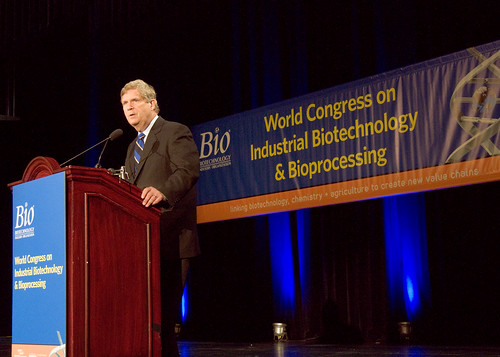
Image : http://www.flickr.com
Open ponds, typically raceway ponds in which algae are grown, require some form of mixing to maintain cells in suspension, to prevent thermal stratification, and to disperse nutrients. Hence, for a proper mixing of the ponds, paddle wheels are used.
Paddlewheels (PW) consist of simple, partial depth blades and high-speed rotors. With paddlewheels providing the flow, algae are kept suspended in the water, and are circulated back to the surface on a regular frequency. A PW consists of three structural units: paddle blades, motor and gear box. A paddle blade is made of aluminium, stainless steel or fiber glass, based on the requirements.
However, these PWs do present some challenges. They are large relative to other types of mixers, especially at higher heads. Another major drawback is that these PWs are very expensive unless a low-shear pump is used.
Though PW s have a few issues, there are a few reasons why PW has emerged as a preferred method for mixing algae in oxidation/ high- rate ponds. First of all, they are well matched to the pumping requirements of high-rate ponds in that they are high-volume and low-head devices. Moreover, they are mechanically simple, requiring minimum maintenance and their drive train can easily be designed to accommodate a wide range of speeds without drastic changes in efficiency.
Info
A paddle wheel consists of three structural units: paddle blades, motor and gear box. A paddle blade is made of aluminium, stainless steel or fiber glass, based on the requirements.
Fiber glass paddle wheels are preferred for algae cultivation in salt water ponds. The width and depth of the paddle wheel and the speed of the paddles going around are customized based on the pond specifications.
No comments:
Post a Comment